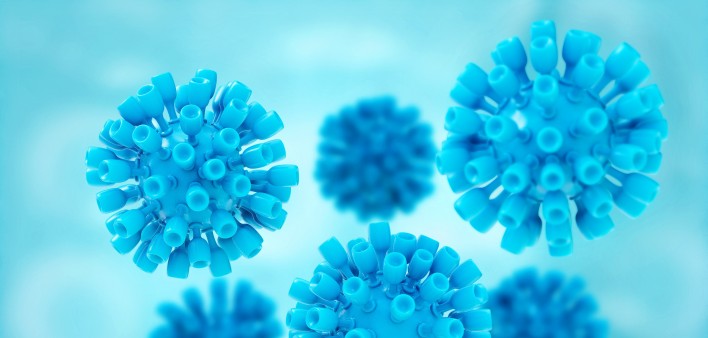A middle-aged man living with HIV saw his viral reservoir considerably deplete following extended treatment with an immune-based treatment for lung cancer. His case offers exciting evidence that may help guide scientists conducting further research toward a means of curing the virus.
The viral reservoir is largely composed of cells that are latently infected with HIV, meaning they are not replicating and producing new copies of the virus. Because standard antiretroviral treatment works only on replicating cells, this dormancy creates an effective shield against such medications. The presence of the viral reservoir, therefore, frustrates attempts to eradicate HIV from the body.
HIV-infected immune cells are typically blocked by cellular molecules known as immune checkpoints. One such checkpoint is called PD-1, or programmed death-1, which also impedes immune cells’ ability to fight HIV. So in theory the use of drugs that inhibit PD-1 among people with HIV may have two key benefits: waking up dormant cells so their HIV infection may become visible to an immune system that is better equipped to fight them. The end result, ideally, would be a diminished HIV reservoir.
And, as it happens, in the cancer treatment field, there are numerous immune-based drugs that inhibit checkpoints like PD-1.
According to a case study published in a letter in the Annals of Oncology, French scientists cared for a 51-year-old man who was a smoker, had been diagnosed with HIV in 1995 and was diagnosed with a Stage IIIa form of non-small-cell lung cancer in May 2015.
The man received surgery and chemotherapy for his lung tumor but then relapsed. So his medical team treated him with the PD-1 inhibitor Opdivo (nivolumab) starting in December 2016. To date, he has received 31 injections of Opdivo given every other week.
Prior to starting Opdivo treatment, the man’s HIV viral load was undetectable, meaning below 20, thanks to treatment with Tivicay (dolutegravir) and Truvada (tenofovir disoproxil fumarate/emtricitabine). After starting the cancer immunotherapy, his viral load steadily but modestely increased, hitting 101 on day 45 of treatment and declining to 31 at day 120.
Meanwhile, the activation of CD4 cells slightly increased between day 14 and 45 of Opdivo treatment. Between day 30 and 120, CD8 immune cell activity rose.
At day 120 of Opdivo treatment, the level of cell-associated HIV DNA, a rough indicator of the size of the viral reservoir, dropped by approximately 90 percent. This reduction remained durable going forward.
Speaking of this apparently successful process of inhibiting PD-1 in order to flush out the reservoir, case-study coauthor Jean-Philippe Spano, MD, PhD, head of the medical oncology department at Pitié-Salpêtrière Hospital AP-HP in Paris, said in a press release:
“This is the first demonstration of this mechanism working in humans. It could have implications for HIV patients, both with and without cancer, as it can work on HIV reservoirs and tumor cells independently. The absence of side effects in this patient is also good news, and suggests this could be an optimum treatment for HIV-infected patients with cancer."
Urging caution when interpreting and reacting to this case study, Spano continued: “Firstly, this is the first case of such a drastic decrease of the HIV reservoir, and we must remain careful, especially because this is only one case; we have published details of another case where there was no decrease of the HIV reservoir.
“Secondly, we have to evaluate—in clinical trials and in a group of 50 French patients we are treating currently—the potential toxicities of these drugs in HIV-infected people. And finally, we have to identify markers that can predict HIV response to the anti–PD-1 therapy so that treatment can be personalized.”
To read a press release about the case study, click here.







2 Comments
2 Comments